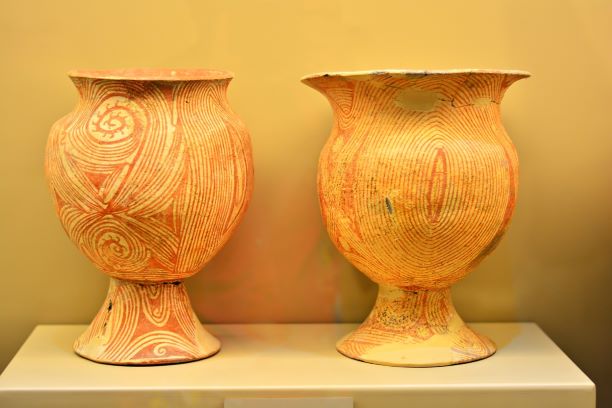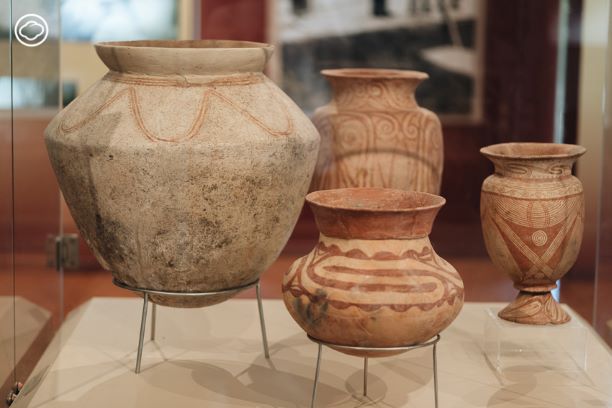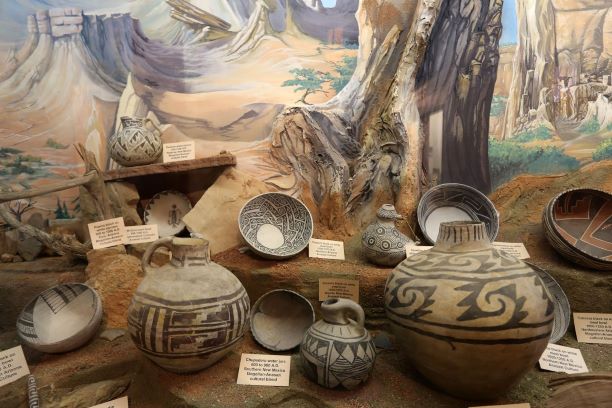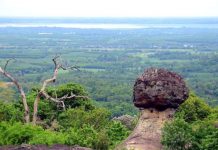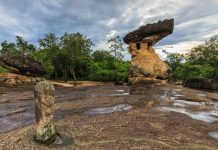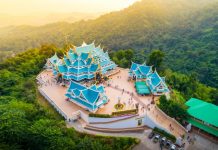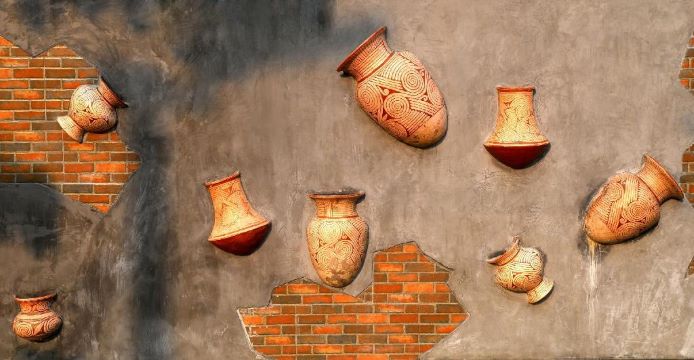
Sight the ancient world civilization at Ban Chiang Archaeological Site
Talking about Ban Chiang in Udon Thani, some might think about the ancient remains site while a lot of people have not known about this place at all. In fact, Ban Chiang is recognized as one of the most archeological sites of the world which tracking back to over 5,000 years ago. Those who yearn for a bit historical story would not miss visiting this remarkable ancient sightseeing on the trip to this province of Thailand, indeed.
Ban Chiang National Museum or also known as Ban Chiang Archeological Site is a vital cultural heritage of Thailand which sited at Nong Han district in Udon Thani. The notable historic site in the northeastern of Thailand or Isan covers approximately 40,000 sqm of space displays the story of the prehistoric life which can be tracked back for 5,000 – 1,400 years ago in the estimate. Moreover, the location serves as the tourist attraction to show the way of life of the people at the time with more than 5,000 years of age, as well.
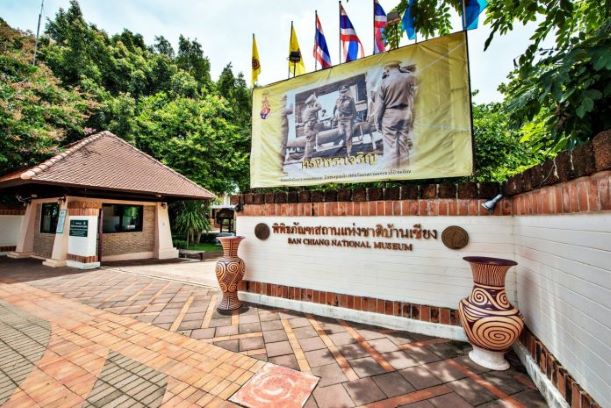
Ban Chiang at a Glance
Literally knows as Ban Chiang Archaeological Site, the place is another significant historical site located at Nong Han district in the Udon Thani province about 55 km distant from the city town. Ban Chiang considered as the old civilization discovered in Southeast Asia region. The location features the cultural, social, and technical of the human, including to the utilities of the agriculture, manufacturing and utilizing base of the metal in this region resulted in the acknowledgment of the life in the past history that can track back to more than 5,000 years ago. The local people at the time left the clues for us to learn about the culture that was developed in many ways, specifically the knowledge or wisdom the essential tool for those can live their lives and settle the cultural society for the mankind and had inherited for a long time. Furthermore, the culture of Ban Chiang also influenced more than a hundred districts among the northeast territory where the place was the strategic location for the people to settle down in the last five millenniums.
World Heritage Site by UNESCO
As the significant archeological site of the world then the UNESCO considered Ban Chiang as the ‘World Heritage Site’. The 359th World Heritage was recognized by UNESCO in 1992 according to the 16th World Heritage Convention at Santa Fe, the USA. Hence, Ban Chiang Archeological Site is the 4th Historical Site of Thailand that is considered to be the world heritage site. The historic site, therefore, became the notable tourist attraction with the vast number of the ancient ruin and archeological finds back to over 5,000 years ago.
Exploring at the location, the first spot to check in at Ban Chiang is ‘Ban Chiang National Museum’ which classified as the memorial site. As the home of the most historical civilization of northeast of Thailand and Southeast Asia region, Ban Chiang Archeological Site features the museum to exhibit the collections of the ancient evidence discovered around the area of Ban Chiang and other ancient remains nearby. The clues including the pottery, equipment, and utility, and other interesting ancient objects that present the story of the human during the prehistorical period.
The story of Ban Chiang National Museum caused by the discovery of the color painted wares in 1960 by the local residents. Then, the pottery was founded accidentally more by the American in 1966, and it was reported to the Department of Fine Arts in 1967, respectively. After that, the excavation of Ban Chiang commenced officially since 1972, particularly, this excavation was graciously honored by HM late King Bhumiphol and Queen Sirikit to visit and witness the excavation base at Wat Pho Sri Nai and other spots among the Ban Chiang complex. Then, the last archeological discovery in between 1974-1975 which is the collaboration of the Department of Fine Arts and the University of Pennsylvania from the USA. Consequently, the numbers of additional excavation and interesting information of Ban Chiang resulted in the establishment of Ban Chiang National Museum in 1975 and had been operated from then on.
Highlight of Ban Chiang
Ban Chiang National Museum consists of the exhibition hall and facility as by following;
1. Princess Srinagarindra Hall

A building which is the base of the services including the information center, ticket booth, conference room, and the venue for temporary exhibition.
2. Princess Galyani Vadhana Hall
This is a place to display the permanent exhibition of Ban Chiang Archeological Site allocated into 9 sub-divisions of the presentation including;
The Exhibition 1: King Bhumiphol and Ban Chiang
The exhibition regarding the site visiting of HM King Bhumiphol in 1972 that initiated the excellent support from the strategic organizations to study and develop Ban Chiang Archeological Site and other interesting historical locations in the country. The question that the king graciously stated at that time is displayed as part of the exhibition to present the fundamental of archeology.
The Exhibition 2: The Archeological Implementation at Ban Chiang Archeological Site
The section features the historical process to study about Ban Chiang Archeological Site focuses on the critical incidents and concerned people of the excavation both Thai and foreigners.
The Exhibition 3: The Excavation at Ban Chiang Archeological Site
Featuring of the task and research during the excavation by the archeologists between 1974 – 1975, for example, the classification and analysis of the archeological objects, included the video recorded the interview of the local residents.
The Exhibition 4: The Archaeological Excavation Units
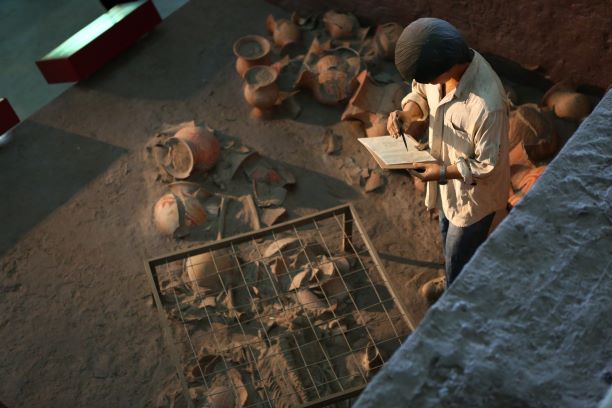
The exhibition modeled the set and ambiance of the archeological excavation units took place in 1974 – 1975. The visitors can witness and learn about the excavation method of Ban Chiang Archeological Site closely.
The Exhibition 5: The Archeological Finds from the excavation unit at Wat Pho Sri Nai
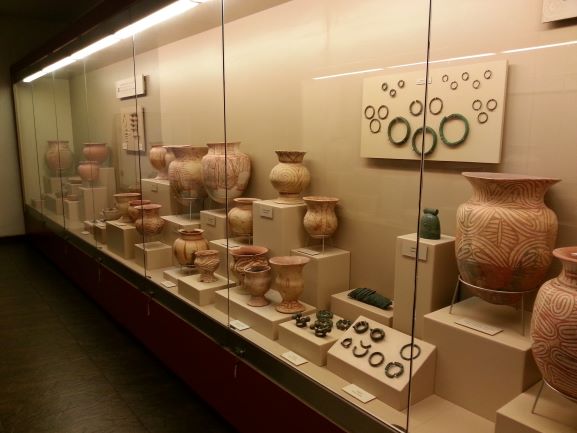
The relics are displayed based on the period of the Ban Chiang culture allocated to 3 periods. For example, collections of the pottery, groups of the utilities, and collections of the accessories made from natural material, glass, stone, and metal.
The Exhibition 6: The Prehistorical Culture of Ban Chiang
The zone features the scene and antiques regarding the way of life of the prehistorical life under the influence of Ban Chiang culture.
The Exhibition 7: Ban Chiang, The Discovery of the Lost Bronze Age
An exhibition that modified from ones exhibited in the USA and Singapore organized by the University of Pennsylvania. The display included the description of the archeological study and research in Southeast Asia region in brief, as well as the discovery of the Bronze Age civilization in Ban Chiang, too.
The Exhibition 8: Ban Chiang, the World Heritage
An exhibition to honor in occasion that Ban Chiang Archeological Site was considered to be the ‘World Heritage Site’ by UNESCO in 1992 followed to the criteria of selection in topic 3 “to bear a unique or at least exceptional testimony to a cultural tradition or to a civilization which is living or which has disappeared”.
The Exhibition 9: Distribution of Ban Chiang Culture
It shows the ancient ruins discovered in the prehistorical excavation units nearby Ban Chiang site since the year 1972 to study the cultural distribution of Ban Chiang within the Sakon Nakhon Basin terrain. Presently, 127 archeological sites which dominated by Ban Chiang culture scattered over the critical watersheds in Udon Thani, Sakon Nakhon, and Nong Khai.
3. Tai Phuan Exhibition Hall
The place features the way of life, history, and culture of Tai Phuan who is the origin resident of the present Ban Chiang Archeological Site.
Rich in the ancient remains and archeological finds which are all thrilled. Generally, most of the people who visit the site are the archeologist and those whom interesting in the ancient history. Those of ancient evidence are all valuable and able to project the life in the prehistorical period excellently.
Besides, Ban Chiang National Museum also exhibits other archeological finds made from various materials that provide further information regarding social and technology of the civilization. Furthermore, there was the excavation of various species of fossil and shell that make we more understanding to the life of the people at that time. The pieces of evidence including the axes made from iron and buffalo’s bone and the proof to show that the villagers did the rice field in the plain area since last 3,000 years ago. Also, the archeologists could classify the fossils that which one is the pet or hunted for food, for instance.
Ban Chiang National Museum opens : from Tuesday through Sunday between 9.00am – 4.00pm (closes on Monday). The admission fee is THB30 for Thai and THB150 for the foreigners.
The Archeological Excavation Unit at Wat Pho Sri Nai
Apart from the national museum at Ban Chiang Archeological Site, there’s another significant archeological excavation unit situated inside the compound of the Buddhist monastery “Wat Pho Sri Nai” which is about 500 meters from the museum to the east. The site is the important location to store the collections of Ban Chiang pottery that opens to the public to visit. Additionally, it was a venue that HM King Bhumiphol and Queen Sirikit graciously visited and witnessed the work of the archeologists dated March 20, 1972. As the first outdoor museum in Thailand, the archeological excavation unit improved by the Department of Fine Arts to store and displays the historical evidence as they were founded originally.
The archeological excavation unit at Wat Pho Sri Nai is a unit considered in the late of Ban Chiang civilization or between 2,300 – 1,800 years ago. The archeological finds of this period were founded including the red painted pottery on the beige or red background and coated with the laterite water and polished. While the metal work was also existed at the time, too. The bronze, although was less founded as the tools and utility but it was used to produce the accessories that are more delicate and magnificent than other ages.
The Archeological Excavation Unit at Wat Pho Sri Nai opens every day from 8.30am through 4.30pm.
Tai Phuan Memorial Residence
Formerly the residence of Pot Montripithak, the traditional style house was allowed by the owner for excavation of the Department of Fine Art in 1972. And after the royal visit of King Bhumiphol and Queen Sirikit, Pot then intentionally donated this house included the piece of land to the Department of Fine Arts for preservation as the memorial of the royal visit.
Additionally, Tai Phuan Memorial Residence was awarded of the Architectural Design Award in architectural heritage in Thailand by The Association of Siamese Architects Under Royal Patronage in 2007, as well.
Exploring the world heritage site at Ban Chiang Archeological Site does not limit the visitor just the ruins and background story of this remarkable ancient civilization. The souvenir and gift of Ban Chiang also are available for the visitor to shop all along the street at the front of the museum, too. Ban Chiang Pottery with unique design and pattern which is renowned all around the world for its reputation and becomes another symbol of the Udon Thani province together with other famous items, such as traditional weaving textile and handicrafts.
How to go to Ban Chiang Archeological Site
By Car, from the town of Udon Thani, you drive along the road number 22 (Udon Thani – Sakon Nakhon) until you reach the gangway to enter Ban Pulu at the 50th km you will see the signage to Ban Chiang National Museum on the left. Then, come to the highway number 2225 and drive more about 6 km to the destination.
For those who don’t have the car, you can travel by public transportation from the old transportation terminal (opposite of Central Udon Thani). Any buses operate the route of Udon Thani – Ban Dung, Udon Thani – Sakon Nakhon, or Udon Thani – Bueng Karn that pass to Nong Mek Intersection. Then, transit to motorcycle taxi or tricycle (Took Took) to the archeological site.




